
Chapter Twenty-four
Second Wave of Democracy
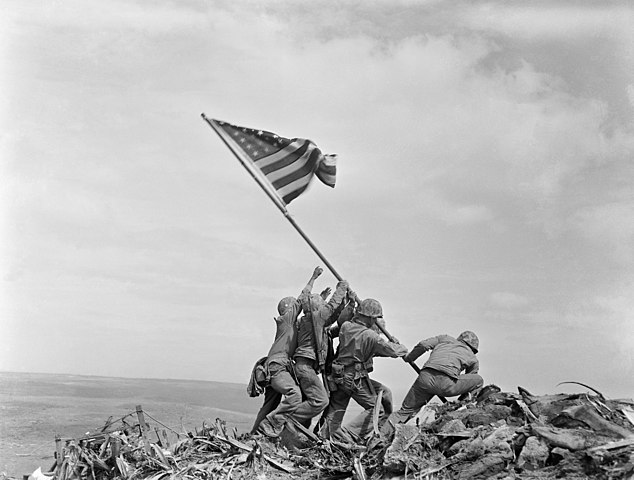 By
the time the Second World War ended in 1945, it had
wrecked the political structures of many nations.
Leaders were often dead at the hands of the Nazis;
others were discredited for their failure to stop the
fascists. Archives and government buildings were
destroyed, treasuries depleted, economies devastated. Of
Europe’s 27 capitals, 19 had been overrun by foreign
troops at some point during the war, often followed by
looting, demolition and deportation. Only Bern, Dublin,
Lisbon, Madrid, Stockholm, Helsinki, London and Moscow
were spared occupation, and those last three had taken
quite a pounding.
By
the time the Second World War ended in 1945, it had
wrecked the political structures of many nations.
Leaders were often dead at the hands of the Nazis;
others were discredited for their failure to stop the
fascists. Archives and government buildings were
destroyed, treasuries depleted, economies devastated. Of
Europe’s 27 capitals, 19 had been overrun by foreign
troops at some point during the war, often followed by
looting, demolition and deportation. Only Bern, Dublin,
Lisbon, Madrid, Stockholm, Helsinki, London and Moscow
were spared occupation, and those last three had taken
quite a pounding.
Some post-war tidying up was easy. The Italians shot Mussolini. The French shot Laval, and the Norwegians shot Quisling. In France the only two factions to come out as winners were the Gaullists (followers of General Charles de Gaulle) and the Communists, both of whom had continued fighting the Germans after the rest of the country had surrendered.
First-wave feminism finished up shortly after World War Two. Most Protestant countries (UK, US, Canada, Germany, Netherlands for example) had already given women the vote in the Interwar Era. Then Catholic countries (France, Italy, Argentina, Cost Rica, for example) followed their lead a generation later, after World War Two. After this, new nations generally included voting rights for women in their constitutions right from the start.
Bad Guys reformed
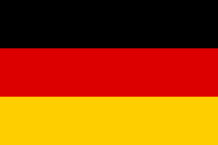 Everyone sat
down after the Second World War and tried to come up
with some way to keep lunatics from taking over Germany
again the next time the allies turned their backs, so
for a start, new laws banned known Nazi sympathizers
from ever holding office again. Reality would eventually
force the occupation forces into compromising on their
restrictions and looking the other way on some German
leaders’ pasts, but at least the Germans could no longer
be Nazi in public. Meanwhile Germany was split into four
zones where each ally could cultivate a new regime in
its own image. Each occupier also got a detached
sliver of Berlin. Hitler’s homeland of Austria was given
the same treatment. The country was split into four
occupation zones, as was the capital, Vienna. Eventually
the three Western democracies bundled their quarters of
Germany together into the Federal Republic of Germany,
and turned it loose under a democratic constitution in
May 1949.① The Soviet
quarter was turned into the German Democratic Republic,
a grim and grey satellite of the Stalinist type.
Everyone sat
down after the Second World War and tried to come up
with some way to keep lunatics from taking over Germany
again the next time the allies turned their backs, so
for a start, new laws banned known Nazi sympathizers
from ever holding office again. Reality would eventually
force the occupation forces into compromising on their
restrictions and looking the other way on some German
leaders’ pasts, but at least the Germans could no longer
be Nazi in public. Meanwhile Germany was split into four
zones where each ally could cultivate a new regime in
its own image. Each occupier also got a detached
sliver of Berlin. Hitler’s homeland of Austria was given
the same treatment. The country was split into four
occupation zones, as was the capital, Vienna. Eventually
the three Western democracies bundled their quarters of
Germany together into the Federal Republic of Germany,
and turned it loose under a democratic constitution in
May 1949.① The Soviet
quarter was turned into the German Democratic Republic,
a grim and grey satellite of the Stalinist type.
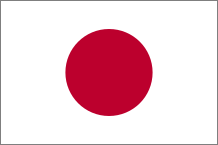 Meanwhile, in
Japan, General Douglas MacArthur, commander of the
American occupation forces, asked several Japanese
officials in October 1945 to develop an acceptably
democratic constitution for the new Japanese government.
When they reported back in February 1946, however, they
had just tweaked the old Meiji constitution a little
bit. MacArthur rejected this and gave his own staff one
week to write a brand new constitution. They did such a
good job that Japan has kept that constitution to this
day without even a single amendment.
Meanwhile, in
Japan, General Douglas MacArthur, commander of the
American occupation forces, asked several Japanese
officials in October 1945 to develop an acceptably
democratic constitution for the new Japanese government.
When they reported back in February 1946, however, they
had just tweaked the old Meiji constitution a little
bit. MacArthur rejected this and gave his own staff one
week to write a brand new constitution. They did such a
good job that Japan has kept that constitution to this
day without even a single amendment.
The new Japanese constitution was enacted in May 1947. It removed all real power from the emperor and placed it the hands of parliament. It established full equality for women. Article 9 renounced war completely – something the Americans would come to regret over the years when they couldn’t borrow troops from Japan to, for example, help pin down Communists or safeguard the worldwide flow of oil during Mideast wars.
Emperor Hirohito was sorry to see his divine power stripped away, but the only way he could keep his throne was as a figurehead. He remained as the “embodiment of the nation” but with no meaningful duties. The American occupation of Japan ended in April 1952, but as with most places the Americans passed though, they kept a few military bases just in case and left behind a taste for baseball.
Because the Italian people threw out the Fascists and switched sides while the war was still raging, they avoided outright post-war occupation. Italy's king was tainted by his cooperation with the Fascist regime, so Italy’s new 1946 constitution made the country a republic. Free elections (including women for the first time) in July 1946 returned a broad spectrum of parties, representing left and right pretty evenly. The right wing Italian People's Party reorganized as the Christian Democrats, a Catholic centrist party which came out ahead of all others and dominated Italian politics for the next 40 years. The left was split mostly between the Communists (19%) and Socialists (20%).
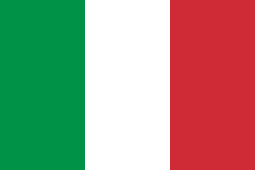 Even though Italy
escaped postwar occupation, this doesn’t mean the
Americans let history unfold without interference. Italy
had a stronger communist voting block than any other
Western country, so American intelligence agencies
poured secret money into post-war Italy to finance
anticommunist politicians. In fact, during the run-up to
the 1948 elections in Italy, the United States feared an
outright Communist victory in the voting, so they
organized a secret anti-Communist militia to overturn
the election if that should happen (Operation Gladio).
As it turned out, the Christian Democrats won handily,
so the secret American arms caches fell into disuse and
abandonment, only to be forgotten and rediscovered after
1990 to the great embarrassment of both the Americans
and the elderly Italian politicians who had cooperated
with their schemes.
Even though Italy
escaped postwar occupation, this doesn’t mean the
Americans let history unfold without interference. Italy
had a stronger communist voting block than any other
Western country, so American intelligence agencies
poured secret money into post-war Italy to finance
anticommunist politicians. In fact, during the run-up to
the 1948 elections in Italy, the United States feared an
outright Communist victory in the voting, so they
organized a secret anti-Communist militia to overturn
the election if that should happen (Operation Gladio).
As it turned out, the Christian Democrats won handily,
so the secret American arms caches fell into disuse and
abandonment, only to be forgotten and rediscovered after
1990 to the great embarrassment of both the Americans
and the elderly Italian politicians who had cooperated
with their schemes.
All in all, the defeat of the Nazis and the allied occupation of the aggressor nations pretty much eradicated Fascism worldwide. Only in Iberia and Latin America did a sort of quasi-fascism linger under the likes of Salazar (Portugal), Franco (Spain), Vargas (Brazil) and Peron (Argentina), but even here, wartime American pressure had pushed the majority of South American nations to tone down their Fascist rhetoric and pageantry.
United Nations
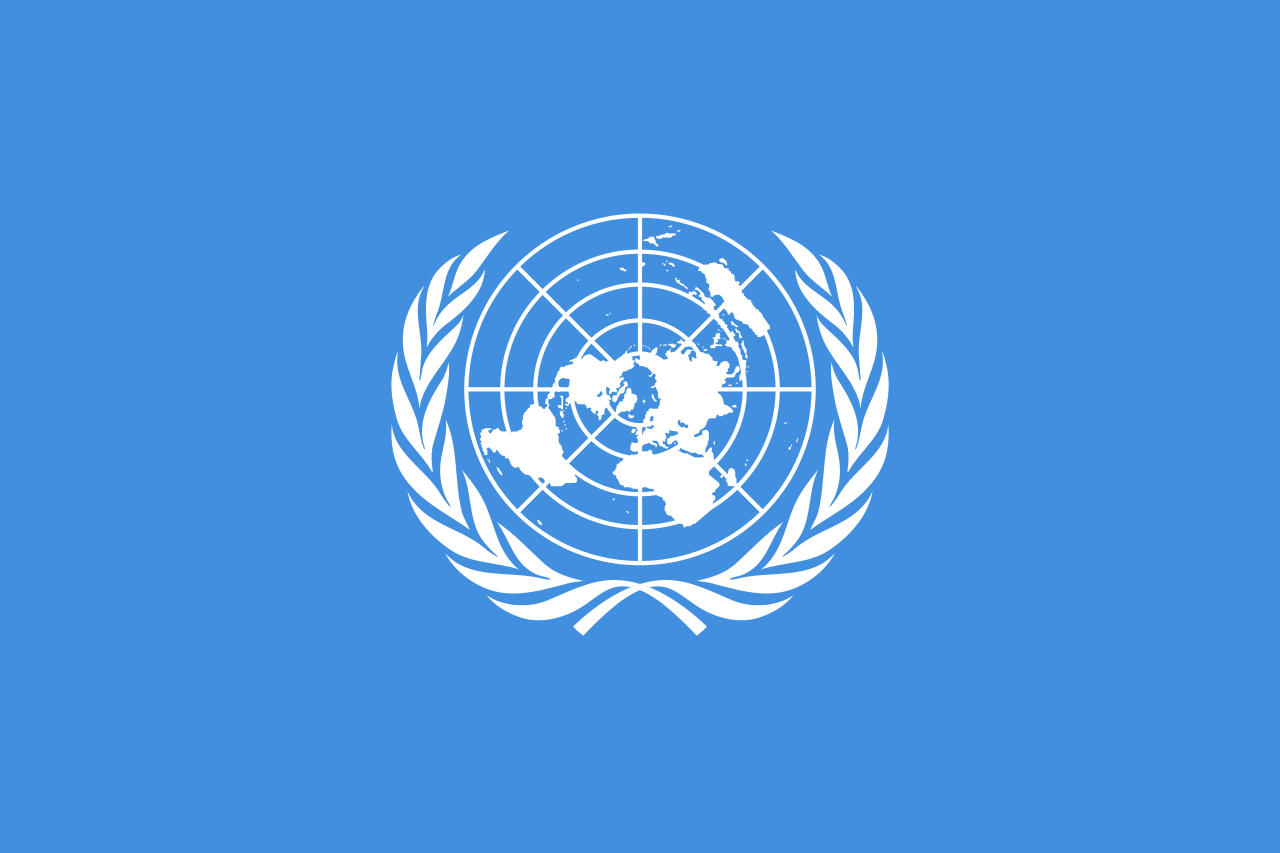 During
the Second World War, the Allies held multiple
high-level conferences all over the world - at first to
coordinate military strategy, but later to sketch out a
blueprint for the postwar world. Many of these
conferences centered on the strong partnership that
existed between the United States and the United
Kingdom. If there was room for one more at the table,
they invited the Russians, who were suspicious of the
West but were also bearing the brunt of the German
military might and needed as much help as they could
get. If there was more room, France and China would be
invited to round out the five countries with most
soldiers in the fight and to guarantee the cooperation
of everyone that mattered. To emphasize that this was an
unbreakable alliance determined to destroy fascism,
these countries began calling themselves the United
Nations. Seventy years later, despite a general
reshuffling of world powers since then, these are still
the five nations with permanent seats and veto power in
the United Nations Security Council.
During
the Second World War, the Allies held multiple
high-level conferences all over the world - at first to
coordinate military strategy, but later to sketch out a
blueprint for the postwar world. Many of these
conferences centered on the strong partnership that
existed between the United States and the United
Kingdom. If there was room for one more at the table,
they invited the Russians, who were suspicious of the
West but were also bearing the brunt of the German
military might and needed as much help as they could
get. If there was more room, France and China would be
invited to round out the five countries with most
soldiers in the fight and to guarantee the cooperation
of everyone that mattered. To emphasize that this was an
unbreakable alliance determined to destroy fascism,
these countries began calling themselves the United
Nations. Seventy years later, despite a general
reshuffling of world powers since then, these are still
the five nations with permanent seats and veto power in
the United Nations Security Council.
Representatives of Nationalist China, the United Kingdom, the United States, and the Soviet Union gathered at the Dumbarton Oaks Conference in Washington, D.C. from August to October 1944. Those talks produced an outline for an organization to promote peace, security and international cooperation. In 1945, representatives of 50 countries met in San Francisco to draw up the United Nations Charter, which was signed on June 26, 1945. The United Nations officially came into existence on October 24, 1945, when the Charter had been ratified by a majority of nations at the conference.
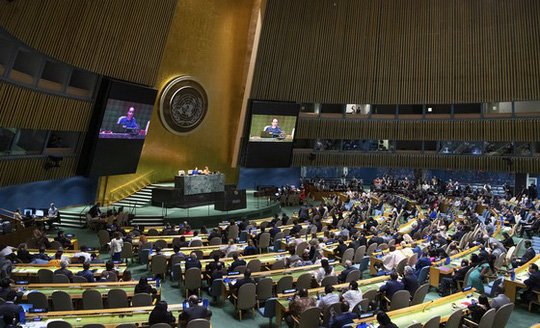 The
legislative arm of the United Nations is bicameral: a
General Assembly of all nations equally represented, and
a Security Council of the Big Five plus ten rotating
members, elected every couple of years to represent five
regional blocs. The Security Council is the answer to
one of the major weaknesses of the League of Nations.
The League had required unanimous agreement of all
members in order to do anything, but the UN only
requires the Big Five (plus four more) in the Security
Council to agree in order to get something done. In
practice, scrounging nine votes in the Security Council
is still fiendishly difficult, but it’s been known to
happen.
The
legislative arm of the United Nations is bicameral: a
General Assembly of all nations equally represented, and
a Security Council of the Big Five plus ten rotating
members, elected every couple of years to represent five
regional blocs. The Security Council is the answer to
one of the major weaknesses of the League of Nations.
The League had required unanimous agreement of all
members in order to do anything, but the UN only
requires the Big Five (plus four more) in the Security
Council to agree in order to get something done. In
practice, scrounging nine votes in the Security Council
is still fiendishly difficult, but it’s been known to
happen.
The world has learned that it helps to have a slow, ineffectual decision-making body to pass unsolvable problems to. Whenever a crisis starts brewing, everyone kicks the problem up to the UN, and while they’re busy dithering and fussing, the crisis fizzles out before anyone does something stupid. It’s the international equivalent of “Let me run it by my manager, and I’ll get back to you.” Without it, individual countries might be forced to make their own decisions quickly – a sure recipe for disaster.
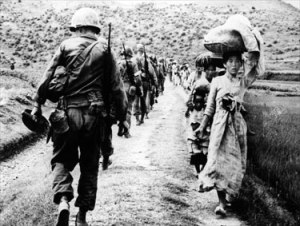 At first there was
some hope that the United Nations would continue its
World War Two role as a worldwide alliance against evil,
but that quickly fell apart. It soon became obvious that
the great powers had contradictory goals in global
affairs. The first time the United Nations succeeded in
mobilizing an army to stop aggression was in 1950 for
the Korean War, and that was only possible because the
Soviet Union had stormed out of the Security Council in
disagreement over which rival Chinese government
(Nationalist or Communist) deserved a seat in the United
Nations; therefore, the Russian ambassador wasn’t on
hand to exercise his veto when the UN voted to send
troops to help South Korea.
At first there was
some hope that the United Nations would continue its
World War Two role as a worldwide alliance against evil,
but that quickly fell apart. It soon became obvious that
the great powers had contradictory goals in global
affairs. The first time the United Nations succeeded in
mobilizing an army to stop aggression was in 1950 for
the Korean War, and that was only possible because the
Soviet Union had stormed out of the Security Council in
disagreement over which rival Chinese government
(Nationalist or Communist) deserved a seat in the United
Nations; therefore, the Russian ambassador wasn’t on
hand to exercise his veto when the UN voted to send
troops to help South Korea.
The only other time the UN authorized force was 40 years later, after Iraq invaded Kuwait. Again, this was only possible because of a rare convergence of multinational interests and historical happenstance. Everyone wanted to protect the supply of oil and stop countries from blatantly conquering each other, and Iraq’s traditional Cold War patron, the Soviet Union, was too busy collapsing to veto it.
Rather than jumping into wars at the beginning when both sides are full of energy and eager to get at each other’s throats, the UN has found it more useful to wait until both sides have exhausted each other and are finally ready to talk. Then the UN borrows soldiers from impartial countries (say, Canada or Nigeria) as peacekeepers to separate the two sides so that bad tempers, hair-triggers, insults, grudges or accidents don’t spark renewed fighting. It’s a successful formula that seems to work most of the time.
Although peacekeeping is the flashiest activity of the UN, it’s not the most important. The UN coordinates and standardizes all those little day-to-day interactions between countries such as communication, travel, weights, measurements, seafaring, public health, border crossings, immigration and mail among nearly 200 independent countries. The UN is the reason a plane from Brazil can arrive at an airport in Cairo without throwing everyone into a panic over what to do next.
Spread of Communism
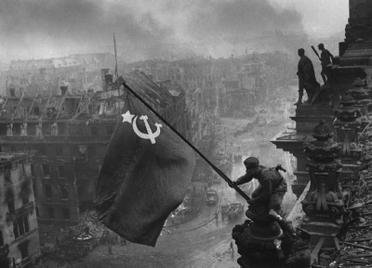 The Second
World War ended with the Soviet army occupying
everything up to Berlin. It’s obvious in hindsight that
Stalin was not going to let East Europe become anything
other than a collection of Soviet satellites, but some
of them tried anyway.
The Second
World War ended with the Soviet army occupying
everything up to Berlin. It’s obvious in hindsight that
Stalin was not going to let East Europe become anything
other than a collection of Soviet satellites, but some
of them tried anyway.
Most nations had Communism imposed on them from above by the occupying Soviet army without much fuss. For example, by the time Poland got around to holding its first postwar elections in 1947, the Communists had enough control over the process to simply rig the voting. Only Czechoslovakia and Hungary had an authentically democratic transitional phase.
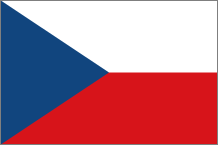 The Czech
government that arrived with the Soviet liberators was a
coalition of pre-war socialist parties. They settled
into Prague in May 1945 and appointed former president
Edvard Beneš to be president again. The Czechs were
still annoyed at the West for handing their country over
to Hitler and grateful to the Soviets for setting them
free, so the Communists came out ahead in the first
elections in May 1946. At 38% of the vote, it was
the best showing by a Communist party in free elections
in history, but it was no majority. Benes organized a
coalition government from all across the spectrum.
The Czech
government that arrived with the Soviet liberators was a
coalition of pre-war socialist parties. They settled
into Prague in May 1945 and appointed former president
Edvard Beneš to be president again. The Czechs were
still annoyed at the West for handing their country over
to Hitler and grateful to the Soviets for setting them
free, so the Communists came out ahead in the first
elections in May 1946. At 38% of the vote, it was
the best showing by a Communist party in free elections
in history, but it was no majority. Benes organized a
coalition government from all across the spectrum.
When Benes was handing out cabinet posts to the various parties, the Communists demanded and received the Interior Ministry. This gave them control of the police and elections, so whenever Communist workers went on strike, there was no one to stop them, but if anti-Communists counterstriked, the police broke it up. For a couple of years, nothing got done because of partisan gridlock. Workers and students regularly went on strike, some in favor of Communism and some opposed.
On February 21, 1948, most non-Communist ministers abruptly resigned from the coalition government. They hoped to provoke sudden new elections that the Communists would not have enough time to rig, letting a clear non-Communist majority be elected. As it turned out, the Communists weren’t going to play by the rules at all, and the Communist police simply took over the government by coup d’état on February 25.
Benes was afraid that fighting back would provoke either a civil war or -- with the Soviet Army still hanging around from World War Two -- an outright Soviet attack, so he gave up and let the Communists form a new government on their own. They quickly cleared non-communists from the government with intimidation, firings, arrests and at least one suspected murder. In March, Foreign Minister Jan Masaryk, the son of Czechoslovakia’s beloved founder and the last important non-Communist in the government, mysteriously fell many stories from a window at the Ministry in his pajamas. The police ruled it a suicide.
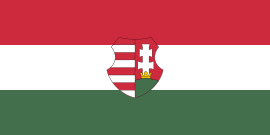 Meanwhile, the
November 1945 elections in Hungary were the first
free-ish elections ever held there. Parties that had
collaborated with the wartime fascist government were
prohibited, but most individuals were allowed to vote
regardless of pre-war political affiliation. When the
ballots were counted, the Independent Smallholders'
Party, a center-right peasant party, won 57% of the
vote, with the Social Democrats and Communists following
second and third with about 17% each. Although the
Smallholders had enough votes to form a government all
by themselves, the commander of the Soviet troops on the
scene vetoed this and forced them to take some
Communists into the government as well. The Smallholders
offered the finance ministry to the Communists, who
turned it down and held out for the Interior Ministry,
which included the police and election commission. By
the next parliamentary elections in 1947, the Communist
police and election commissioners had entirely rigged
the system in their favor and that was that.
Meanwhile, the
November 1945 elections in Hungary were the first
free-ish elections ever held there. Parties that had
collaborated with the wartime fascist government were
prohibited, but most individuals were allowed to vote
regardless of pre-war political affiliation. When the
ballots were counted, the Independent Smallholders'
Party, a center-right peasant party, won 57% of the
vote, with the Social Democrats and Communists following
second and third with about 17% each. Although the
Smallholders had enough votes to form a government all
by themselves, the commander of the Soviet troops on the
scene vetoed this and forced them to take some
Communists into the government as well. The Smallholders
offered the finance ministry to the Communists, who
turned it down and held out for the Interior Ministry,
which included the police and election commission. By
the next parliamentary elections in 1947, the Communist
police and election commissioners had entirely rigged
the system in their favor and that was that.
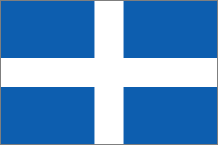 Although
technically in East Europe, Greece escaped Soviet
occupation. In 1944 Churchill and Stalin had divided up
the Balkans and agreed that Greece would be in the
British sphere of influence, so when the Germans
withdrew their troops to defend the Fatherland, British
troops moved in to take control on behalf of the royal
Greek government-in-exile. Communist Greek guerrillas
had been hoping to take over the country, so they ended
up fighting the British and the royalists. Eventually,
the British arranged enough of a cease-fire to get their
own troops out and leave the royalists to mop up. The
first post-war elections in March 1946 were boycotted by
the Communists, so the right-wing coalition (United
Alignment of Nationalists) easily won 55% of the vote.
The center-left coalition (National Political Union) won
19% and the Liberal Party 14%.
Although
technically in East Europe, Greece escaped Soviet
occupation. In 1944 Churchill and Stalin had divided up
the Balkans and agreed that Greece would be in the
British sphere of influence, so when the Germans
withdrew their troops to defend the Fatherland, British
troops moved in to take control on behalf of the royal
Greek government-in-exile. Communist Greek guerrillas
had been hoping to take over the country, so they ended
up fighting the British and the royalists. Eventually,
the British arranged enough of a cease-fire to get their
own troops out and leave the royalists to mop up. The
first post-war elections in March 1946 were boycotted by
the Communists, so the right-wing coalition (United
Alignment of Nationalists) easily won 55% of the vote.
The center-left coalition (National Political Union) won
19% and the Liberal Party 14%.
Fighting resumed almost immediately afterwards and raged on until 158,000 Greeks were dead and the nation devastated. Although the independent Communist government in Yugoslavia under Tito helped the Greek communists, Stalin stuck with his wartime agreement and stayed out of the fight. Finally, in 1949, the Communists were decisively defeated, and Greek democracy started up in earnest. By the 1950 elections, the old Greek party system had reemerged.
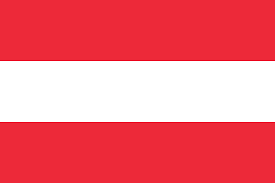 The Soviet Union also
meddled in the democratic politics of two former enemies
without actually taking control. In Austria, the Soviets
continued to occupy their assigned zone until 1955,
inhibiting the development of electoral politics. Even
after the Russians finally left, the center-left and
center-right joined into a grand coalition to run
Austria for many years to keep extremists under control.
As one of the conditions of withdrawing, the Soviets
insisted on absolute, perpetual neutrality, which
explains why
The Soviet Union also
meddled in the democratic politics of two former enemies
without actually taking control. In Austria, the Soviets
continued to occupy their assigned zone until 1955,
inhibiting the development of electoral politics. Even
after the Russians finally left, the center-left and
center-right joined into a grand coalition to run
Austria for many years to keep extremists under control.
As one of the conditions of withdrawing, the Soviets
insisted on absolute, perpetual neutrality, which
explains why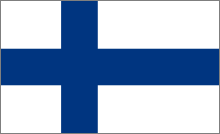 Austria was one
of the few West European nations to stay out of NATO.
The Soviets also asserted a right of veto over the
democratic government of Finland, and they refused to
allow the popular Social Democrats to take a place in
government until 1966. This made it difficult for the
Finns to form a stable regime, leading to 25 different
cabinets between 1945 and 1966.
Austria was one
of the few West European nations to stay out of NATO.
The Soviets also asserted a right of veto over the
democratic government of Finland, and they refused to
allow the popular Social Democrats to take a place in
government until 1966. This made it difficult for the
Finns to form a stable regime, leading to 25 different
cabinets between 1945 and 1966.
Over the next 40 years, the Soviet satellites of East Europe would sometimes try to shake off communist control, but reformers always banged up against Russian intransigence. No matter how much the nation itself wanted to change, their Soviet overlords prevented it. In Hungary in 1956, mobs chased out the Communist leadership and installed the reformer Imre Nagy as prime minister until the Soviets returned to stop to all this silliness. Nagy and his associates were hauled away and shot. In Czechoslovakia in 1968, a shuffle inside the ruling council (Central Committee) put the reformer Alexander Dubček in charge. A bright new day burst forth in the Prague Spring, but then the Soviets marched in and stomped it back into the ground. In 1980, Polish workers led by Lech Walesa, an electrician at the shipyards in Gdansk, organized illegally as the labor union Solidarity. A series of strikes all over Poland for reform crippled the Polish economy, but the Polish Army took over the government in 1981 and put a stop to the reform movement before the Soviet could lose their patience and invade.
![[Previous Chapter]](images/previous_arrow.gif) |
![[Next Chapter]](images/next_arrow.gif) |
① The new constitution established Germany as the first nation to use a Mixed-Member Proportional (MMP) voting system, which combines the ideological nuance of Proportional Representation with the personal touch of Geographic Representation by collecting two votes from each voter, one for each system. The first vote picks an individual to represent a district according to ordinary winner-take-all voting. This gives each community a specific person in the lower house (Bundestag or Federal Diet) to look out for local interests. Also, like most geographic representation, this tends to weed out small parties in favor of two broad coalitions, the center-left and the center-right. Half the seats in the Bundestag are filled this way. Each citizen also casts a second vote for his/her favorite party -- no matter how fringe -- and these votes are used to fill the other half of the seats, adjusting the balance of parties to more closely match the overall preferences. This can restore some of the smaller parties to the Bundestag. [video explanation]
MMP is not very common, but notably New Zealand switched to MMP with the 1996 election.
The upper house of the German parliament (Bundesrat or Federal Council) represents the individual states outright. Each state has three to six votes (according to population) to cast as a bloc; however, the Council has limited duties. Real governing is in the hands of the Bundestag.
Copyright © August 2019 by Matthew White
